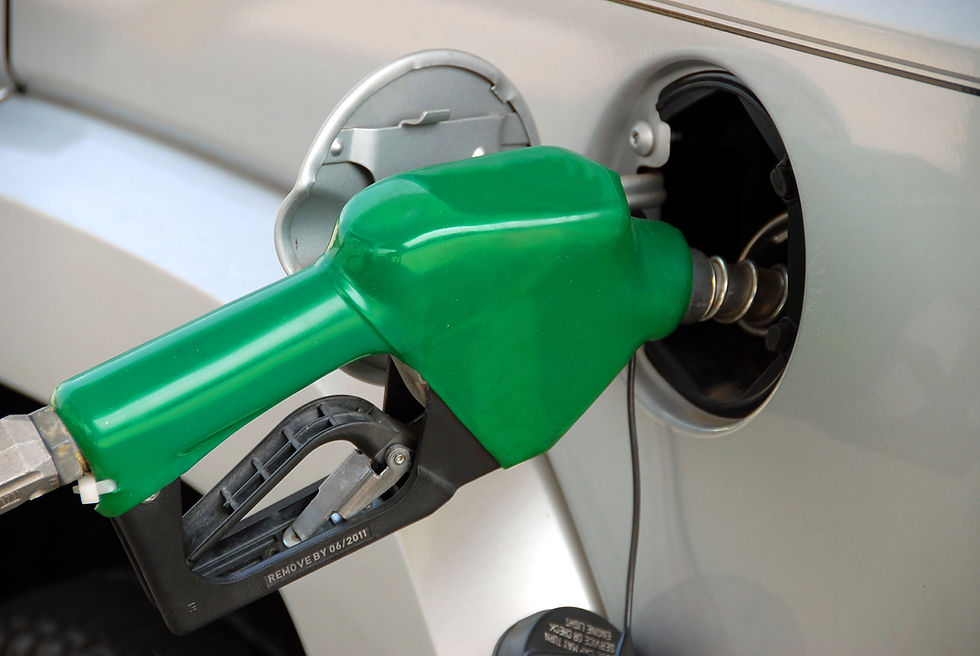Rising gas prices are hitting an all-time high
- trafficwatcha

- May 10, 2022
- 3 min read

What you can do about soaring gas prices Gas prices have reached record levels in recent weeks. It is so high that now people have to consider if it is worth ditching their cars and taking public transportation again. This is especially true for the commuters who are starting to return to the office. Highest average gas prices ever Gas prices are indeed soaring and AAA have been tracking the price at the pump. A gallon of unleaded gas costs $4.24, as of March 18. That’s up from $2.88 a year ago and breaks records set in previous weeks. The last time gas was priced this high was in 2008 when a gallon of unleaded gas would cost you $4.10 at the pump. To put it into historical perspective, the average price of all gas in February was $3.61, according to the United States Energy Information Administration, which tracks all types of gas at the pump. In February 2021, the price was $2.58. The February 2022 amount was the highest average gas price since the market went above $3 for 47 straight months between 2010-2014. More recently, the average gas price topped $3 in May 2021. What’s causing the soaring gas prices? The simple answer to why gas is so high is supply and demand. There are global issues that contribute to the price increase. Right now, the cost of crude oil has increased in recent months. Then you have the Russian war in Ukraine. Russia is the third-largest petroleum producer in the world. The U.S. Energy Information Administration says that Russia produces a tenth of the global oil supply. President Biden banned Russian oil imports from retaliating against the Russian invasion. There are also domestic issues that help cause the higher prices. The United States continues to deal with inflation, which is boosting the prices of all types of goods. Supply chain issues continue to plague the country, which is also facing trucking and labor shortages. There’s often a delay between a drop in oil prices and lower prices at the pump. That scenario may be playing out now. Impact on households There are serious impacts on households and businesses as gas prices remain high. In March, Moody’s conducted a study that showed households would have to spend an extra $1,300 this year, about one percent of a household budget, because of high gas prices. In California, the agriculture industry is getting hit hard. Shipping costs are up 40-50 percent, and the price is passed on to the consumer. Produce prices have skyrocketed. A box of cabbages used to be $12-$14. Now it costs $24. Those price increases are being passed on to the public across the country. Meanwhile, everyone from food bank delivery programs to police departments has to grapple with the increase. Should you drive to work? Commuting is already up 25 percent this year, according to Inrix, a research firm. There’s also more demand at the pump as offices begin to call workers back. Since public transportation ridership continues to lag compared to pre-pandemic numbers, it makes sense to think people are driving to work, but should they? Driving to work may not be the best option, financially or otherwise. For starters, there are hidden costs to driving a car. According to AAA, you may be spending up to $8,500 or more per year to maintain the vehicle. On top of your vehicle costs are increased fuel costs. That could put a big dent in your household savings in one year or less, depending on how much you drive and how much it costs to fill up your car. Avoiding those high gas prices is a good reason to jump on public transit if you’re heading back to the office. You can save money on gas and enjoy other benefits. Public transportation can help reduce air pollution because it pulls cars off the road. To that end, it also helps with reducing traffic congestion. Fewer cars on the street are better for the environment. You’ll also be investing in your community since every $1 invested in public transportation translates to $4 generated in economic return. That includes jobs, with 50,000 new jobs created for every $1 billion invested in public transportation. The perfect time to use commuter benefits A great way to avoid the high gas prices and save money is by using public transportation with your commuter benefits. If you’ve been driving to work or thinking about it, this is an opportunity to avoid the congestion and save some money while you commute. Commuter benefits allow employees to save money tax-free from their paychecks every month, which reduces their taxable income on their federal taxes. You can use the money towards paying to ride mass transit, rideshares, or even qualified parking if you decide to drive. Employees can spend up to $280 per month from their paychecks.
Credited | Commuter Benefits
https://commuterbenefits.com/2022/03/rising-gas-prices-are-hitting-an-all-time-high/



Comments